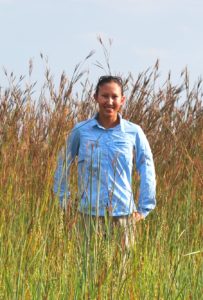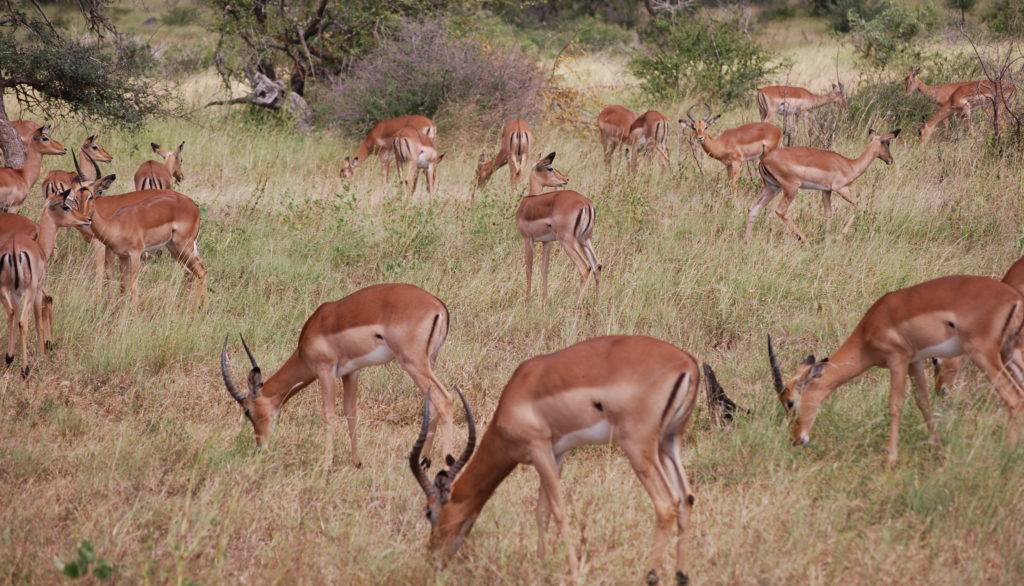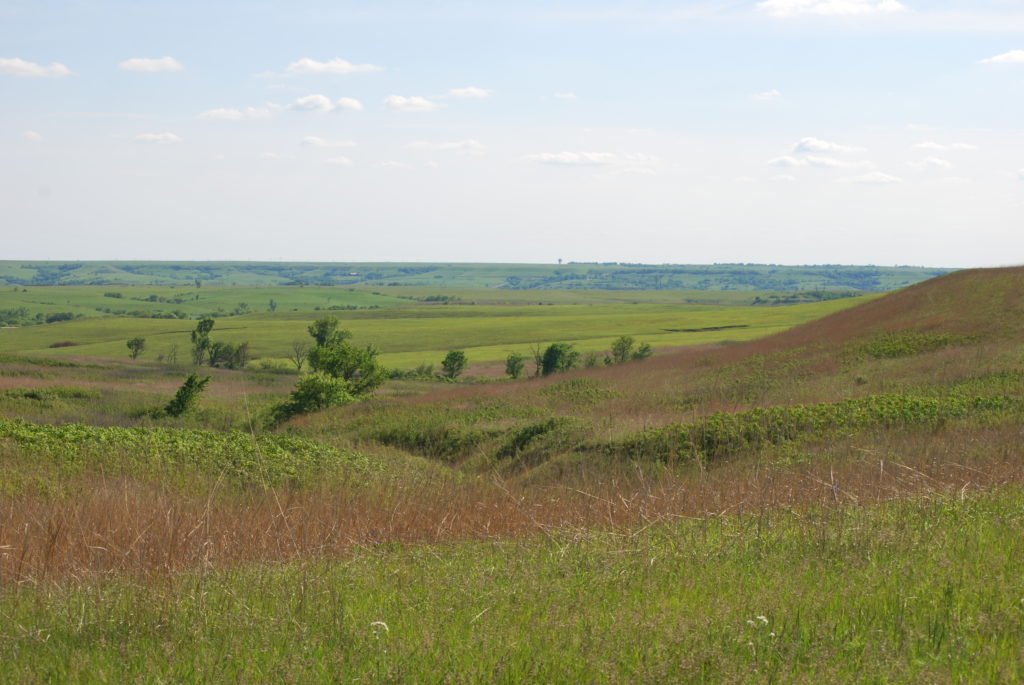
Kim Komatsu stands in a grassland at Konza Prairie Biological Station, in Manhattan, Kansas.
(Credit: Cynthia Chang)
by Kim Komatsu,
ecosystem conservation ecologist
One of the unexpected perks of my life as a scientist has been the opportunity to travel for work. As a grassland ecologist, my studies have taken me to South Africa and Tanzania to investigate the roles of fire, grazing, and nutrient availability in determining plant growth and species diversity. In these exotic field sites, I would drive by impalas, zebras, elephants, giraffes, cheetahs, lions, and leopards before arriving at my experimental plots. Then I would spend my day working in the hot sun to survey the plant communities in my plots, all the while guarded by a park ranger with a loaded rifle to protect me from the very animals I marveled at on the way to the field site. (Thankfully those rifles were never fired during my trips.) With grasslands all over the world, I have many more grassland types on my research wish list, including the Mongolian steppes, the Pampas of South America, the Cerrado of Brazil, and the rangelands of Australia and Europe.

Impala, a species of antelope, abound in the grasslands of Kruger National Park, South Africa. Impala are common grazers in African grasslands, and are important prey for carnivores like lions, cheetahs, and leopards. (Photo: Kim Komatsu)
Not all of my field travel sounds as glamorous as trips to Africa. Most of my grassland research to date has taken place in what many Americans refer to as “fly over country.” However, during the many months I have spent away from my home and family doing research in the North American Great Plains (from Kansas to Colorado to Minnesota), I have seen the beauty and grace of the prairie that most people miss as they fly over or blast by on the interstate.
In addition to travel for research, I also make several trips per year to attend scientific conferences. At these conferences, I spend my days hearing about the amazing research going on around the world, and my nights enjoying the regional cuisine and conversation with colleagues in places like Albuquerque, Memphis, Denver, Portland and, this summer, New Orleans!
Although it’s great to see new places and meet new friends around the world, all of this travel comes with some challenges. Example: getting a suitcase full of soil through South African customs, or having to purchase extra suitcases to bring all my samples home from Minnesota. It also means spending a couple months each year away from home, which can be difficult for my family. I also recognize that travel (especially by air) greatly increases my carbon footprint. As such, I try to limit my travel as much as possible, while ensuring my research gets done.
Still, seeing these different grasslands first-hand can help uncover secrets that would otherwise be buried. Studying grassland ecosystems around the world allows us to see what they have in common, and what separates them, especially in how they respond to things like fires or the animals that graze them. This level of understanding empowers us to make better predictions about how ecosystems around the world will behave in the future.
Kim Komatsu heads the Ecosystem Conservation Lab at the Smithsonian Environmental Research Center. She studies the connections between communities and their environments, especially in how they respond to global change and what could impact those responses.

The awesomely beautiful tallgrass prairie in the Flint Hills of Kansas. The Flint Hills contains the majority of the remaining tallgrass prairie in the United States, thanks to its rocky soil that prevented farmers from plowing it under to farm the fertile soils. (Photo: Kim Komatsu)

